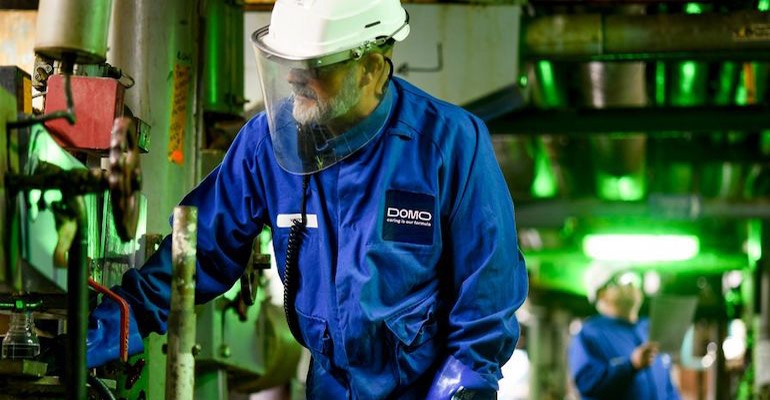Simulation Project Gauges Aging of Polyamide Parts in Contact with Coolant
Domo Chemicals’ Thermofip simulation initiative could lead to weight reductions of around 20% for polyamide-based automotive parts exposed to coolant.
June 5, 2023

To unlock the full potential of automobile part optimization, it is crucial to simulate the effects of aging on reinforced polyamide (PA), according to materials supplier Domo Chemicals. Among the various factors contributing to time-related degradation of part performance, one of the most critical is contact with mixtures of water and ethylene glycol. This aspect is just as important for materials suppliers as it is for the companies designing the parts and the carmakers using them.
When calculating the final mechanical properties of a part made of glass-fiber-reinforced polyamide resin, integrative simulation offers the advantage of also taking the conversion process into account. This opens new possibilities for parts optimization. The project’s goal is to achieve a significant weight reduction of around 20% for the targeted parts.
Domo’s Thermofip initiative has been focusing on simulating the influence of coolants on the progressive embrittlement of materials to find new ways of making even lighter parts. The results, set to be unveiled by the end of this year, will reportedly be a game changer for carmakers by establishing:
The assessment of polymer degradation levels in end-of-life parts;
a prototype simulation chain capable of computing local degradation in parts exposed to coolant;
models enabling the prediction of material degradation levels caused by aging and heat, which can then be used to predict the mechanical performance of coolant-exposed polymers;
a database on aged parts allowing validation of the numerical developments and models obtained at specimen level;
a platform for the industrialization of a simulation chain capable of computing the progressive impact of aging on the mechanical performance of parts.
By optimizing the simulation and use of fiber-reinforced-plastic parts exposed to water- and glycol-based coolants, Domo believes it will derive a significant competitive advantage in the automotive cooling segment.
The main economic objective of the Thermofip project is to place participants, which include Renault and Toyota, in a privileged position for competing in the automotive cooling and oil system market. The push to reduce CO2 emissions and resulting changes in engine architecture has spurred incredible growth within this market, according to Domo.
In particular, the market for active components, such as actuators and valves, is expected to triple by 2025 compared with 2018, creating huge opportunities for both parts manufacturers and plastics suppliers. In this market environment, being able to rely on an enhanced predictive simulation technology can be an important lever for gaining market share, said Domo.
About the Author(s)
You May Also Like




